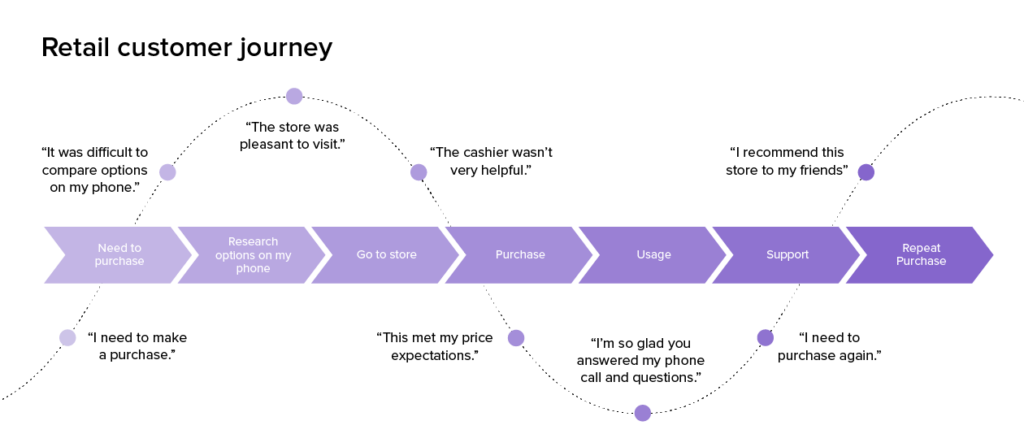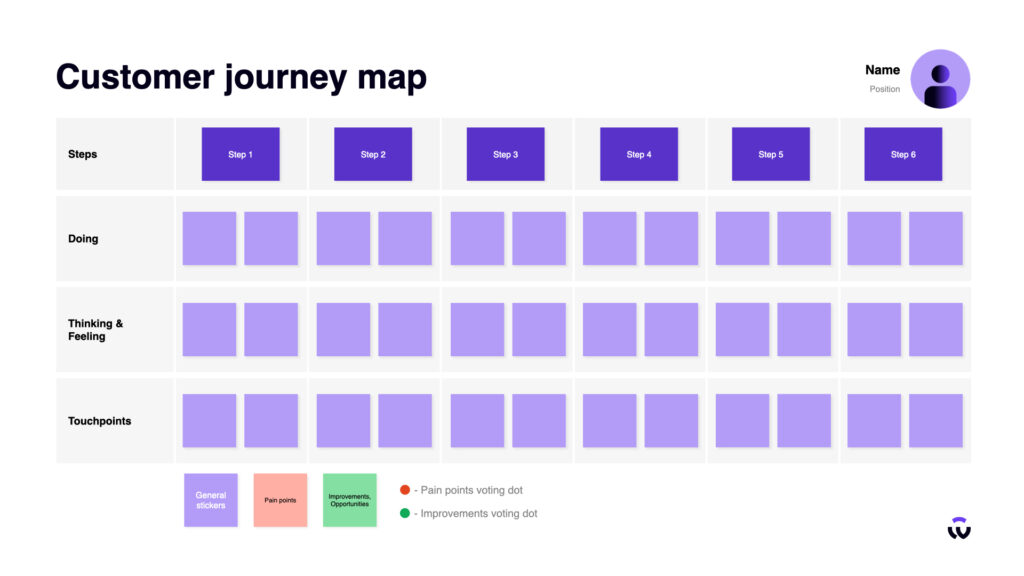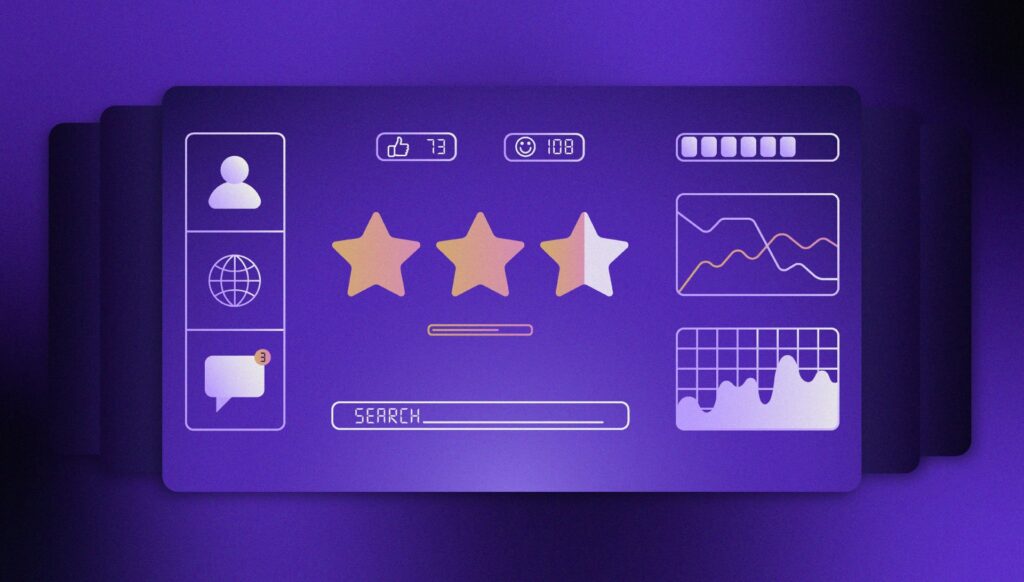Customer Journey Mapping: The Windmill Guide to Design Thinking
- UX & Design
When embarking on a journey, especially one to an unfamiliar location, you do not leave anything to chance. You’ll need a plan for how to get there, and a map, whether traditional or digital, like Waze or Google Maps, will make the journey more pleasant.
Similarly, having a graphic outline of how your potential customer experiences your product or service is critical to creating a memorable experience for them, which translates to better lead generation and increased customer retention, among other things.

Getting a customer to buy a product may appear to be a simple task. You make your product available, and your target customer sees it and purchases it. However, according to the most recent Baymard Institute data, the average cart abandonment rate across industries is 69.89 percent. In other words, seven out of ten shoppers abandon their shopping carts without making a purchase.
So, for your products to be successful, you must first understand the path your prospective customers take to reach your products, as well as what they need and value the most.
The Function of Customer Journey Maps in Design Thinking
In Design Thinking, getting to know your customers’ personas and understanding how they interact with your brand gives you a pretty good idea of how they will behave in the future. An excellent way to do this is through customer journey mapping.
A journey map is a detailed visualization that depicts the experience of a user-based persona as they use a specific product. It depicts the steps your customers take when interacting with your product or service.
A customer journey map specifies three elements:
- The points at which prospective and existing customers interact with your brand.
- What the customer seeks at each point.
- The path they take from one point to the other, as they move towards buying your products. A map can be illustrated for an online experience, retail experience, or a combination of these.
Why should a company carry out customer journey mapping?
Making a customer journey map confers a lot of advantages that include:
Understanding your customers more—The better you understand the customer’s expectations, the more you can tailor their experience to fit their needs.
Make better measurable decisions—By following each milestone on the journey map, you can easily measure the progress of optimizing your product’s purchase process against the customer experience desired by your customers.
Identify and improve business processes—The mapping process brings together sales, marketing, and customer support to define what customers need to know before they buy, what they need after they buy, and how these interactions can be enhanced.
Identify growth opportunities—You can use the journey map to identify new growth opportunities for your company.
Run a tight customer-centric ship—During the mapping process, auditing your content can reveal areas where you are losing customers and how you can shore up and strengthen those areas.
Steering content priorities—It’s easy for teams to become distracted by a new and exciting idea. A journey map that expresses the needs of the target audience helps to ensure that the team stays true to what your audience wants and needs.
When should it be done?
Customer journey mapping can be do when your start-up wants to:
- Assess the gaps in your current service offering.
- Increase the personalization of customer interactions for each customer profile or segment.
- Create a more effective marketing strategy for your new products and services.
- Recognize how each customer persona’s service experience differs.
- Develop a new experience while keeping the important moments in mind.
- Compare your competitors’ journeys to yours and create better differentiators.
Download our free customer journey map template

If you’ve downloaded Windmill Digital’s free Customer Journey Map template, you can make and customize it to meet the needs of your brand or product.
But, before you begin creating your customer journey map, let us explain how to fill it successfully. We’ll go over what each component represents and what to expect from each question.
The 7 Key Components of the Journey Map
- Name/ Persona
A user persona is a fictitious character representing a distinct customer segment of your start-up. When creating this persona, be sure to consider characteristics like background, demographic, lifestyle, character, information sources available to them, as well as shopping preferences. The information to build user personas can be gathered through user interviews, empathy maps, surveys, etc.
- The Phases (Step 1-7)
A customer journey map includes significant milestones in the customer journey. You’ll begin by drafting the path your business intends for a customer to take to reach a goal. Using the typical buying process stages, you’ll list each stage horizontally.
- Doing
This section of the customer journey map details the action a customer takes at each stage of the buying process. List out every action your customers take all through their interaction with your company. Whether clicking on a CTA link in your email or searching on Google.
Take note if customers take too many actions to get to their goals. Finding a solution to this by cutting down the number of steps a customer needs to take can feel risky, but it will pay off in higher conversion rates.
- Thinking and Feelings
Emotion drives everything your customer does. And their emotions change depending on where they are in their journey.
If your process is lengthy or complicated, they may experience a variety of emotions at each stage. Including these emotions on the journey map can help you mitigate negative journey emotions so they don’t become synonymous with your brand.
- Pain point voting dot
Where there is a negative emotion, there’s a pain point that caused it. Adding pain points to your customer journey map can help you identify which stage your customer is experiencing negative emotions and deduce the reason why.
For example, one of your customers could love your product but abandon their cart upon discovering unexpectedly high or hidden delivery charges.
- Improvement pain point
Improvement pain points are where you and your team plan on how to potentially mitigate these pain points.
This segment aims to improve your purchasing process so that your customers have few or no issues with it and have positive emotions when they patronize your business.
For example, one way to alleviate the pain points associated with delivery charges could be to provide a FAQ page where customers can learn more about the charges.
- Touchpoints
A touchpoint in a customer journey map is a point at which your customer can form an opinion about your company. Touchpoints can be found anywhere your company has direct contact with potential or existing customers. Customer touchpoints can include a pop-up ad, interactions with your employees, notifications and error messages, and even a Google review.
Conclusion
Customer journey mapping is not a one-time event. The customer journey is subject to change, and your brand must be prepared to adapt. However, the template provided here should give you a good start in better understanding your customers’ journey as they interact with your company, brand, products, partners, and people.
Remember to map out the various journeys taken by the persona representing your various customer segments. This can be time-consuming, but worthwhile because boosting customer retention percentages by just 5% can maximize profits by 25% to 95%.


